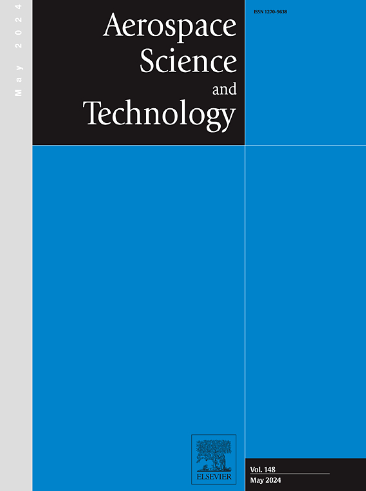Deep learning-based prediction of initiation jet momentum ratio in jet-induced oblique detonations
IF 5
1区 工程技术
Q1 ENGINEERING, AEROSPACE
引用次数: 0
Abstract
Oblique detonation, with its attributes of self-ignition, rapid heat release, and high thermal cycle efficiency, has garnered significant attention. It is crucial to explore methods that actively control the detonation at a shorter distance under less compressive conditions, and wall jets for active control stands out. However, when the jet momentum ratio excessively exceeds the critical value, it not only leads to resource wastage but may also compromise the outlet thrust performance. Thus, this paper presents a novel deep learning-based method for predicting the jet momentum ratio to ensure detonation with a sufficient margin while minimizing its value across various flight conditions. Firstly, the proposed methodology utilizes a deep neural network (DNN) to classify detonation status under different operating conditions. Building upon the concept of incremental learning, knowledge acquired by the classification network is repurposed to identify the transition point between detonation initiation failure and success. To address potential initiation failure issues in practical applications when seeking the critical jet momentum ratio, we elevate the threshold for the probability of successful initiation, defining such the ratio as the "robust jet momentum ratio". The framework developed in this study enables rapid identification of the robust jet momentum ratio within 0.07 s. To improve the model's inadequate learning of the discontinuous features associated with initiation/initiation failure transitions, data augmentation techniques are employed. The improved model demonstrates efficient determination under two-dimensional variables of flight altitude and Mach number. This study addresses a key challenge in jet prediction by devising an adaptive strategy for tuning jet momentum ratios according to varying flight conditions. This work bears significant engineering application value in the realm of hypersonic propulsion technology.
基于深度学习的射流诱发斜向爆轰中起爆射流动量比预测
斜向起爆具有自燃、快速放热和热循环效率高的特点,因此备受关注。探索在较小的压缩条件下主动控制较短距离引爆的方法至关重要,而用于主动控制的壁面射流则脱颖而出。然而,当喷射动量比过度超过临界值时,不仅会造成资源浪费,还可能影响出口推力性能。因此,本文提出了一种新颖的基于深度学习的方法来预测喷气动量比,以确保在各种飞行条件下引爆时有足够的余量,同时将其值降至最低。首先,所提出的方法利用深度神经网络(DNN)对不同运行条件下的起爆状态进行分类。在增量学习概念的基础上,分类网络获得的知识被重新用于识别起爆失败与起爆成功之间的转换点。为了解决实际应用中在寻求临界喷射动量比时可能出现的起爆失败问题,我们提高了起爆成功概率的阈值,并将该比率定义为 "稳健喷射动量比"。本研究开发的框架可在 0.07 秒内快速识别稳健喷流动量比。为了改善模型对与启动/启动失败转换相关的不连续特征学习不足的问题,我们采用了数据增强技术。改进后的模型在飞行高度和马赫数的二维变量下显示出高效的确定性。这项研究通过设计一种自适应策略,根据不同的飞行条件调整喷气动量比,解决了喷气预测中的一个关键难题。这项工作在高超音速推进技术领域具有重要的工程应用价值。
本文章由计算机程序翻译,如有差异,请以英文原文为准。
求助全文
约1分钟内获得全文
求助全文
来源期刊

Aerospace Science and Technology
工程技术-工程:宇航
CiteScore
10.30
自引率
28.60%
发文量
654
审稿时长
54 days
期刊介绍:
Aerospace Science and Technology publishes articles of outstanding scientific quality. Each article is reviewed by two referees. The journal welcomes papers from a wide range of countries. This journal publishes original papers, review articles and short communications related to all fields of aerospace research, fundamental and applied, potential applications of which are clearly related to:
• The design and the manufacture of aircraft, helicopters, missiles, launchers and satellites
• The control of their environment
• The study of various systems they are involved in, as supports or as targets.
Authors are invited to submit papers on new advances in the following topics to aerospace applications:
• Fluid dynamics
• Energetics and propulsion
• Materials and structures
• Flight mechanics
• Navigation, guidance and control
• Acoustics
• Optics
• Electromagnetism and radar
• Signal and image processing
• Information processing
• Data fusion
• Decision aid
• Human behaviour
• Robotics and intelligent systems
• Complex system engineering.
Etc.
 求助内容:
求助内容: 应助结果提醒方式:
应助结果提醒方式:


